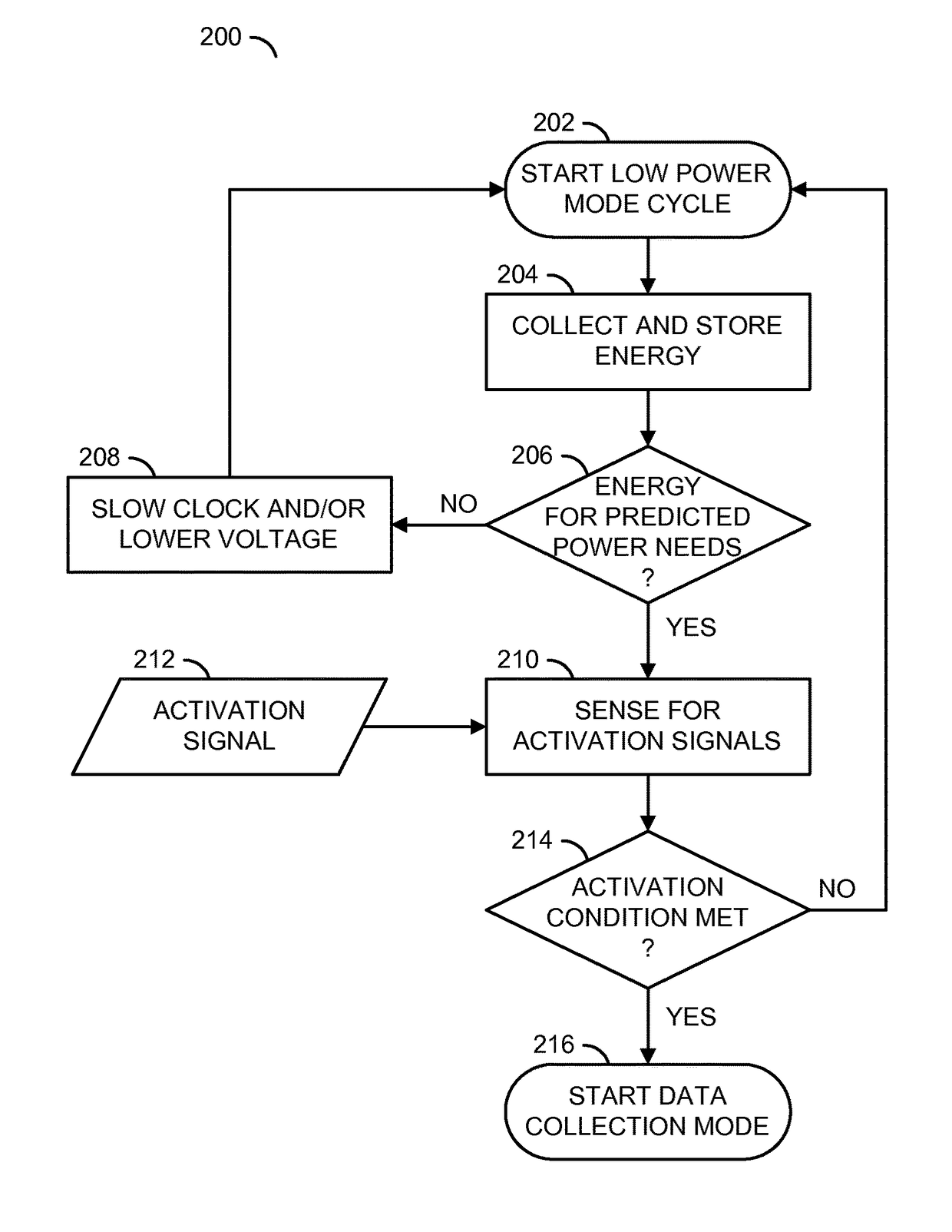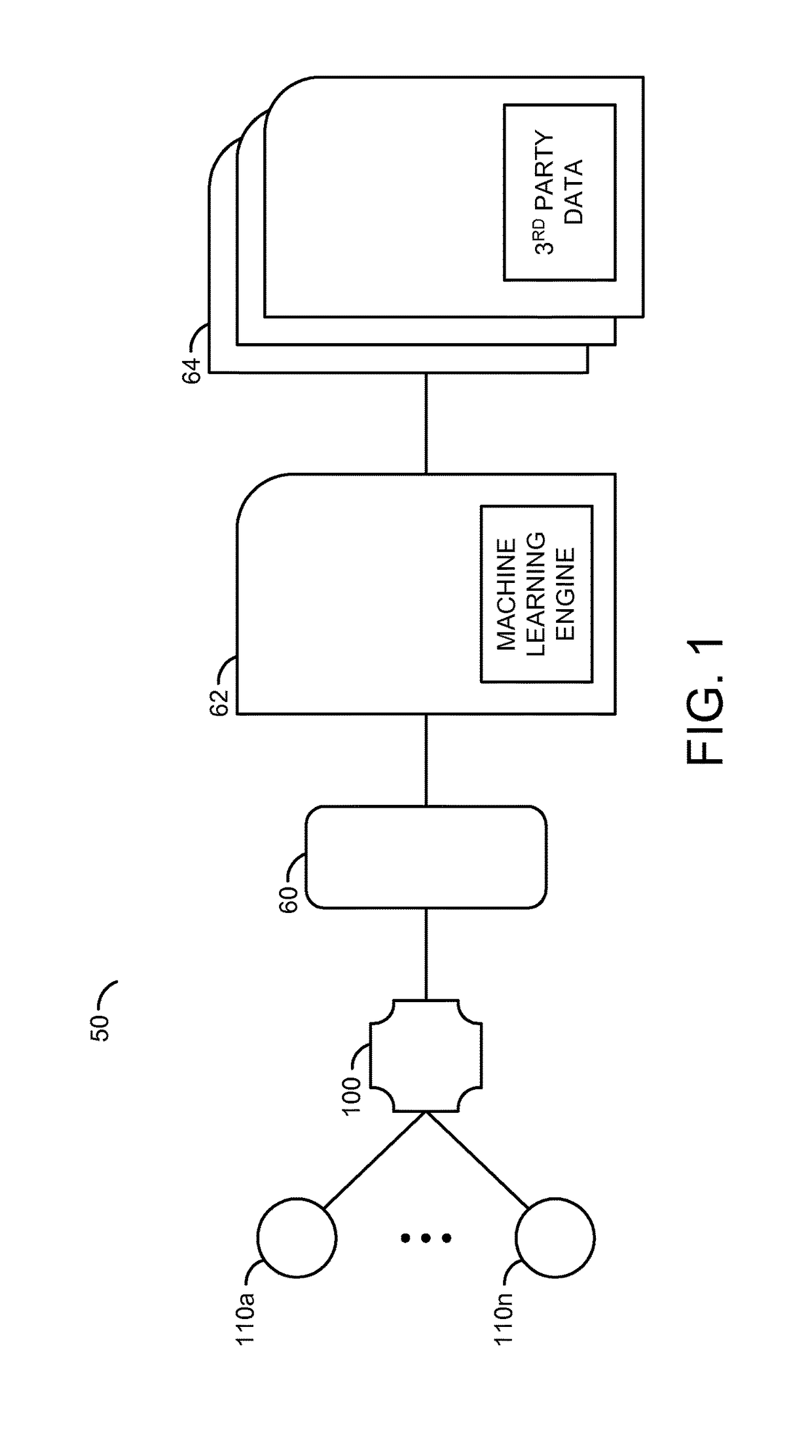Predictive power management in a wireless sensor network
a wireless sensor and network technology, applied in the field of power management, can solve the problems of unfavorable change, huge number of devices that would need to be implemented with batteries that are unaffordable (or at least inconvenient) to change, and conventional approaches are unlikely to be sufficien
- Summary
- Abstract
- Description
- Claims
- Application Information
AI Technical Summary
Benefits of technology
Problems solved by technology
Method used
Image
Examples
Embodiment Construction
[0017]Embodiments of the invention provide a context-aware and / or power-aware wireless sensor network system that enables application needs to determine which data is captured, transmitted and / or stored at the edge of the wireless sensor network. Such an implementation may result in lower power usage, lower bandwidth usage, less interference, and / or less storage and / or processing capacity in the cloud. The determination of which data is important may change and may be determined based on context and / or knowledge. The sensor system is highly adaptable. A software application can reprogram the sensor nodes with new instructions as data needs change and / or grow more complex. Additionally, the power management of the sensor nodes is application-driven to prioritize limited power resources according to the application needs. Power resources may be calculated based on available energy, a power budget, predicted future power needs and / or energy harvesting opportunities.
[0018]Referring to F...
PUM
 Login to View More
Login to View More Abstract
Description
Claims
Application Information
 Login to View More
Login to View More - R&D
- Intellectual Property
- Life Sciences
- Materials
- Tech Scout
- Unparalleled Data Quality
- Higher Quality Content
- 60% Fewer Hallucinations
Browse by: Latest US Patents, China's latest patents, Technical Efficacy Thesaurus, Application Domain, Technology Topic, Popular Technical Reports.
© 2025 PatSnap. All rights reserved.Legal|Privacy policy|Modern Slavery Act Transparency Statement|Sitemap|About US| Contact US: help@patsnap.com



